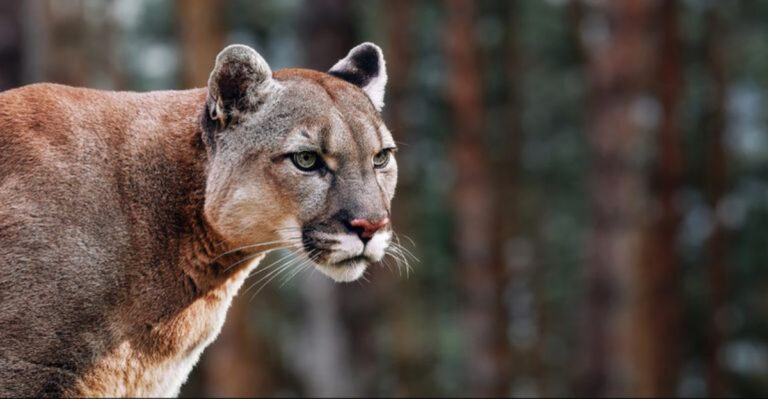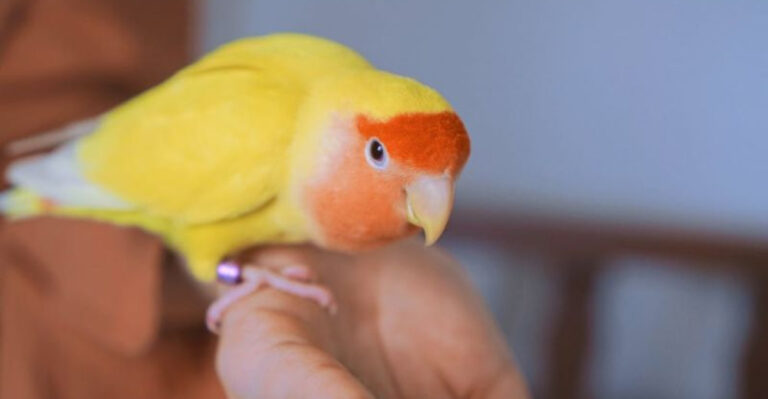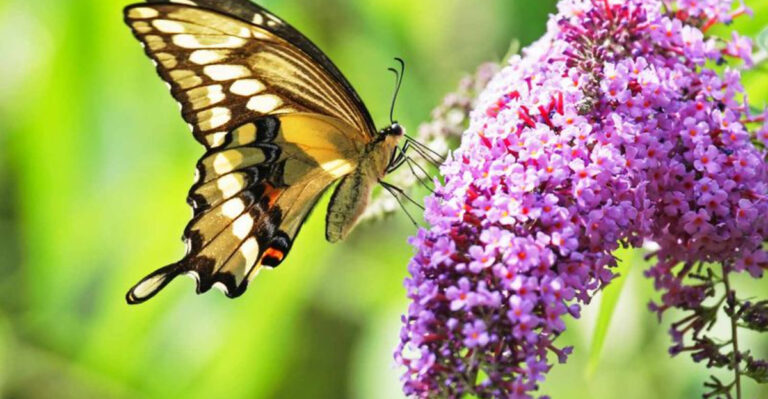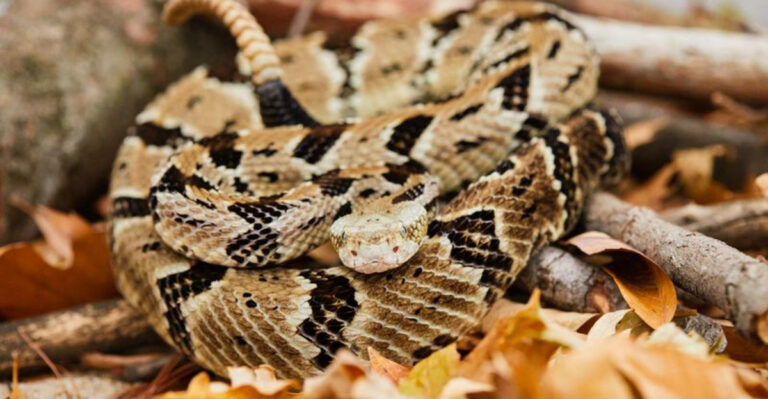Bald Eagle Vs. Philippine Eagle: 14 Powerful Facts That Reveal The Stronger Bird
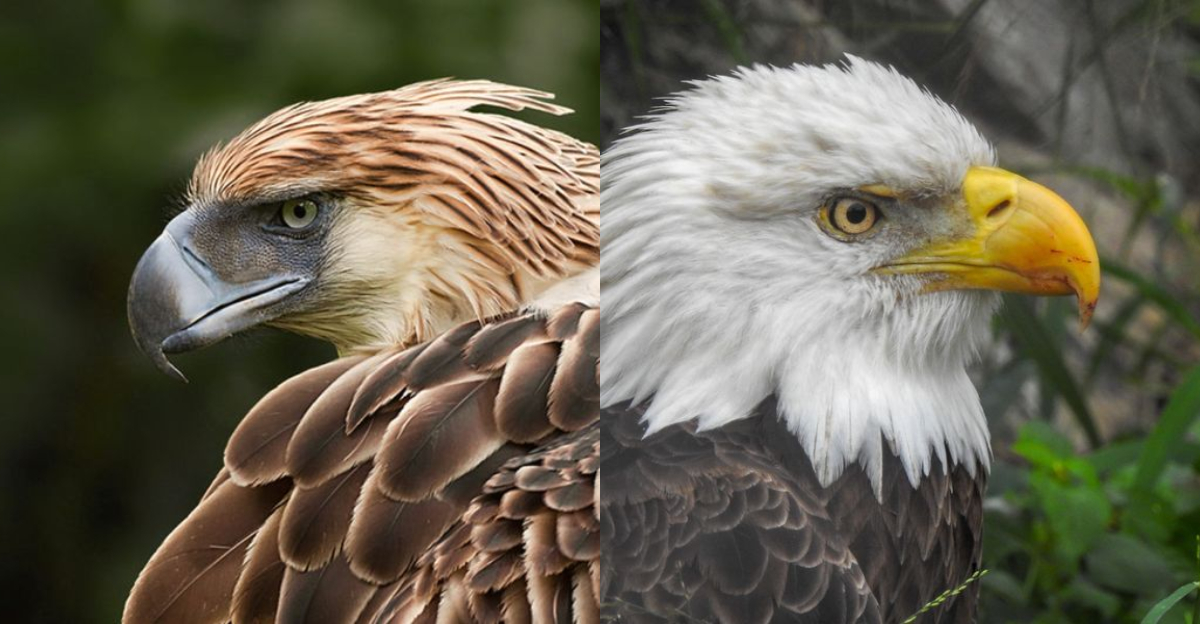
Eagles represent nature’s ultimate aerial predators, combining power, speed, and hunting prowess. The Bald Eagle, America’s national symbol, and the Philippine Eagle, one of the world’s largest and rarest raptors, stand as titans in the bird kingdom.
When comparing these magnificent creatures, several fascinating differences emerge that help determine which truly reigns supreme in the wild.
1. Size Showdown

The Philippine Eagle dominates the size competition with an impressive 3-foot height and wingspan stretching up to 7 feet. These dimensions make it significantly larger than the Bald Eagle.
Bald Eagles, while still massive, typically stand about 2.5 feet tall with wingspans reaching 6-7 feet. The Philippine Eagle’s bulkier frame gives it a clear advantage in physical presence.
2. Weight Warriors
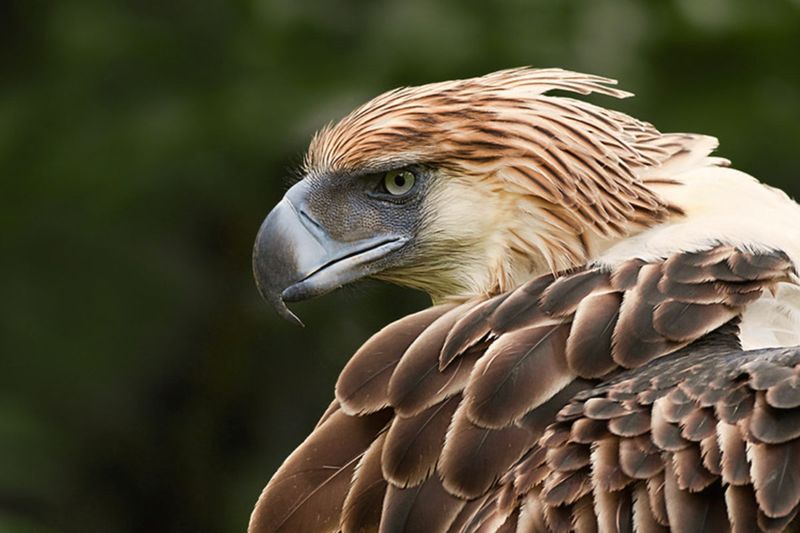
Female Bald Eagles tip the scales at 10-14 pounds, while males weigh 7-10 pounds. This substantial weight contributes to their powerful diving abilities when hunting fish.
Philippine Eagles weigh between 10-18 pounds, with females larger than males. Their heavier build provides greater striking force when capturing prey, giving them a slight edge in the weight category.
3. Talon Terror
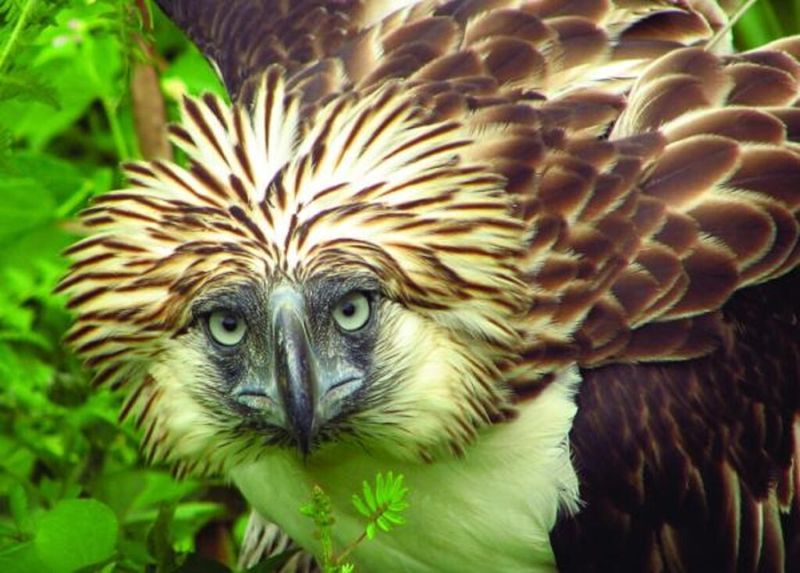
Bald Eagles possess incredibly strong talons that exert around 400 pounds per square inch of pressure. These razor-sharp weapons easily pierce fish scales and small mammal hides.
Philippine Eagles boast even more formidable talons measuring 3-4 inches long—larger than a grizzly bear’s claws! Their rear talon can grow to 5 inches, creating a lethal hunting tool that outclasses the Bald Eagle’s grip.
4. Beak Brutality

The Bald Eagle’s hooked yellow beak measures approximately 2.6 inches, perfectly designed for tearing fish flesh. Its specialized serrations help grip slippery prey with remarkable efficiency.
Philippine Eagles sport a larger, deeper bill reaching nearly 3 inches. This more massive beak allows them to tackle bigger prey, including monkeys and flying lemurs—prey far beyond the Bald Eagle’s typical diet.
5. Hunting Habits

Bald Eagles primarily hunt fish, snatching them from water surfaces with remarkable precision. They’re also opportunistic scavengers that readily steal food from other predators.
Philippine Eagles showcase extraordinary hunting versatility, taking down monkeys, civets, flying lemurs, and large birds in dense forests. Their ability to navigate through tight jungle canopies while pursuing agile prey demonstrates superior hunting adaptability.
6. Speed Superiority
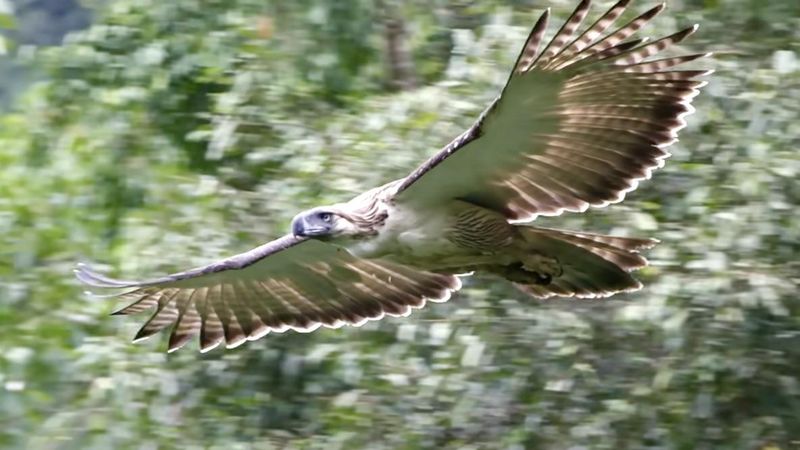
Bald Eagles achieve impressive speeds of 35-43 mph during level flight. When diving for prey, they can reach breathtaking velocities up to 100 mph, creating their signature hunting plunge.
Philippine Eagles, despite their larger size, maintain competitive speeds around 40 mph. Their forest habitat requires more maneuverability than raw speed, resulting in different flight adaptations focused on agility rather than velocity.
7. Habitat Hardiness

Bald Eagles thrive across diverse North American environments from Alaska to Mexico. Their adaptability to various climates and landscapes has helped their population recover from endangered status.
Philippine Eagles face a tougher challenge, surviving only in diminishing old-growth forests of the Philippines. Their specialized habitat requirements make them critically endangered, with fewer than 400 breeding pairs remaining in the wild.
8. Lifespan Longevity
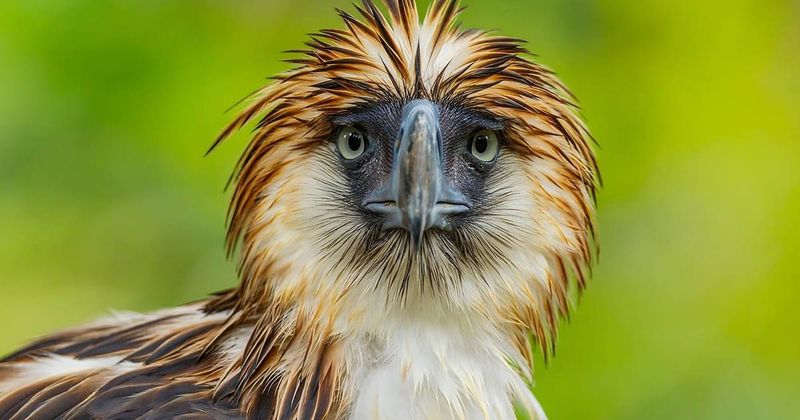
Bald Eagles enjoy impressive lifespans reaching 20-30 years in the wild. Under optimal conditions in captivity, they’ve been known to survive up to 50 years!
Philippine Eagles match this longevity, typically living 30-60 years in their natural habitat. Their extended lifespan allows experienced birds to develop advanced hunting techniques and territory knowledge, crucial for survival in challenging forest environments.
9. Territorial Tenacity
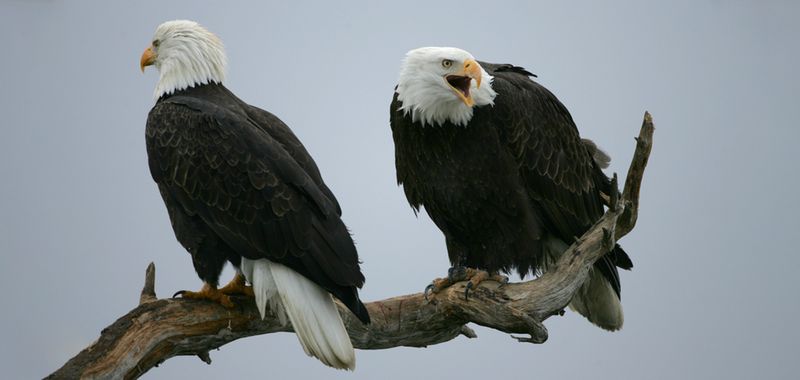
Bald Eagles establish territories spanning 1-2 square miles, fiercely defending these areas from intruders. Mated pairs maintain these territories year after year, returning to the same nesting sites.
Philippine Eagles require vastly larger territories—approximately 25-50 square miles per breeding pair! This enormous spatial need demonstrates their position as apex predators requiring extensive hunting grounds to sustain themselves and their offspring.
10. Nesting Notoriety
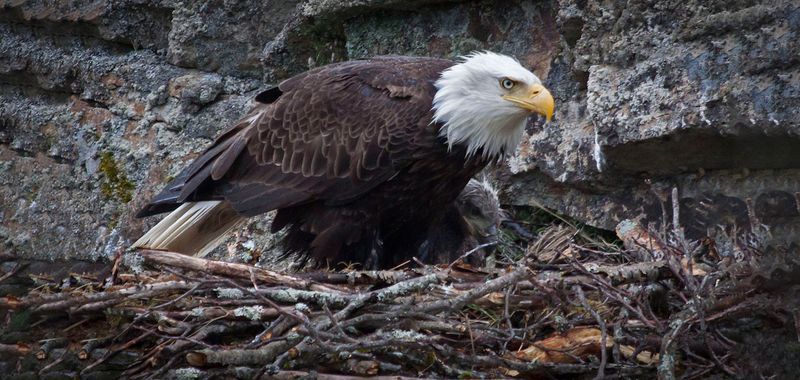
Bald Eagles construct some of the largest bird nests in the world, measuring up to 6 feet wide and weighing up to a ton! These massive structures grow larger each year as the eagles add material.
Philippine Eagles build relatively modest nests by comparison, typically 3-5 feet across. However, they invest tremendous energy selecting perfect nesting sites in tall, isolated trees that provide optimal protection from predators and weather.
11. Parenting Prowess
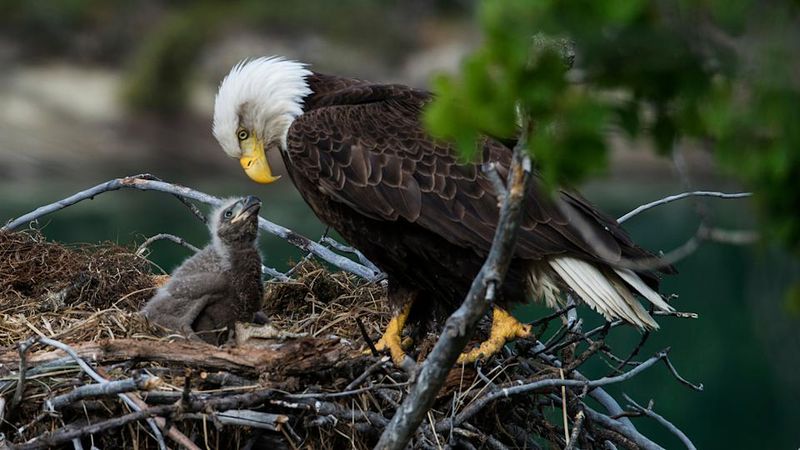
Bald Eagle pairs typically raise 1-3 eaglets annually. Both parents share incubation duties and hunting responsibilities, demonstrating remarkable cooperative parenting.
Philippine Eagles invest even more in reproduction, raising just one chick every two years. This intensive parenting strategy involves a 60-day incubation period followed by 5-6 months of dependency, creating one of the longest breeding cycles of any bird.
12. Evolutionary Edge

Bald Eagles belong to the sea eagle group that evolved to specialize in fishing. Their partially scaled feet and specialized talons excel at gripping slippery prey from water surfaces.
Philippine Eagles represent an older, more primitive eagle lineage dating back millions of years. Their unique evolution in isolated island environments created a highly specialized predator unlike any other raptor, with adaptations specifically for hunting in dense tropical forests.
13. Vision Virtuosity

Bald Eagles possess vision approximately four times sharper than humans. They can spot fish swimming beneath water surfaces from hundreds of feet in the air—a remarkable adaptation for their fishing lifestyle.
Philippine Eagles may have even more impressive eyesight, specially adapted for detecting movement in dense forest canopies. Their forward-facing eyes provide excellent depth perception crucial for navigating through trees while pursuing agile prey at high speeds.
14. Conservation Contrast
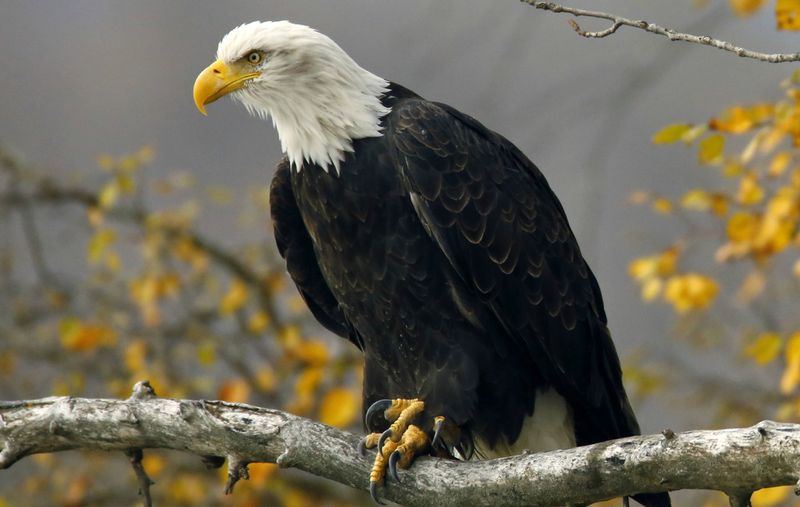
Bald Eagles represent one of conservation’s greatest success stories. Their population rebounded from just 417 breeding pairs in the 1960s to over 300,000 individuals today after DDT bans and habitat protections.
Philippine Eagles face a grimmer reality with fewer than 400 breeding pairs remaining. Deforestation threatens their survival despite their status as the Philippines’ national bird, making them critically endangered despite conservation efforts.


